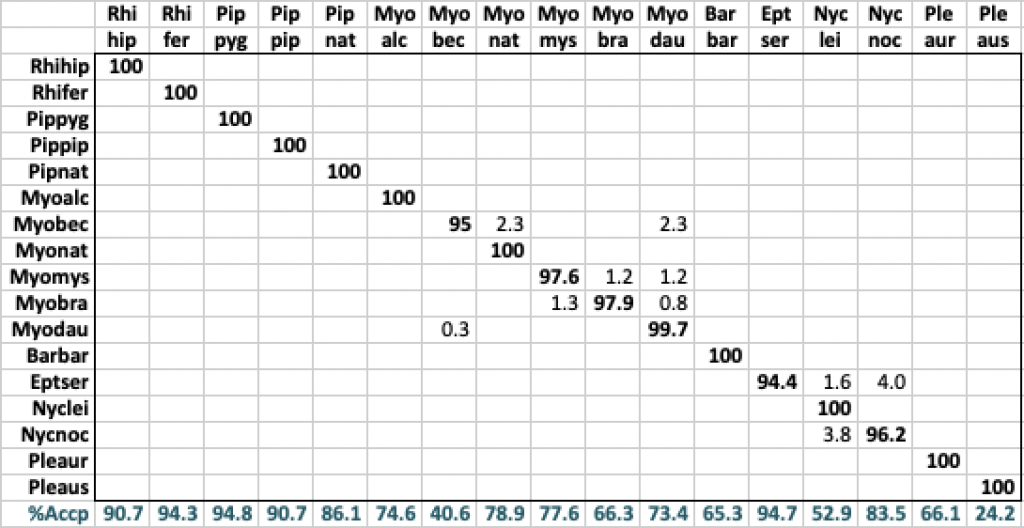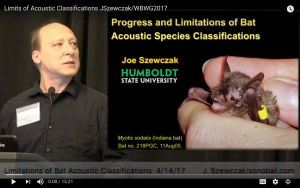Species Identification
Acoustic species discrimination is still a relatively new “science” and it must be understood that any auto-classifier provides guidance and inference to species, but by virtue of the call variation from all species, the process of classification does produce false positives on species ID.
The species ID process essentially amounts to a probabilistic process because the plasticity and resulting call repertoires of species results in many areas of overlapping data space. Although some species do show a 100% correct rate for some situations, do note that rate describes the classifier’s ability to recognize ideal reference (i.e., good quality) files of the type on which the classifier was built, and a finite data set. You should expect actual field data to present unknown call types and sounds outside of the known library, and any such signals can potentially result in misclassifications.
Classifying an entire sequence typically provides more confident results than classifying individual calls as this benefits from the combined information within the sequence. SonoBat UK classifiers are based on an exemplar reference library set of 38,187 parametrised full-spectrum calls recorded from species-known bats. The confusion table below presents the classification performance of call sequences by relative percentage.

Sometimes only a smaller set of species-discriminating call varieties can provide confident classification while many other calls types fall into overlapping data space. SonoBat will offer a ‘suggestion’ which can only be considered a probabilistic decision, the correctness of which will depend upon quality, the distance of the bat from the microphone, and probably the bat itself. In the above table note the % of Accepted ie classified calls. For example of the sample calls for Grey Long-eared bat only 24.2% of calls were classified but of these 100% were classified correctly.
The take home message is that bats exhibit considerable plasticity in their calls and SonoBat, and any other classification system, must be considered fallible.
For more information on this topic watch Joe’s lecture recorded at the 2017 Western Bat Working Group meeting.

